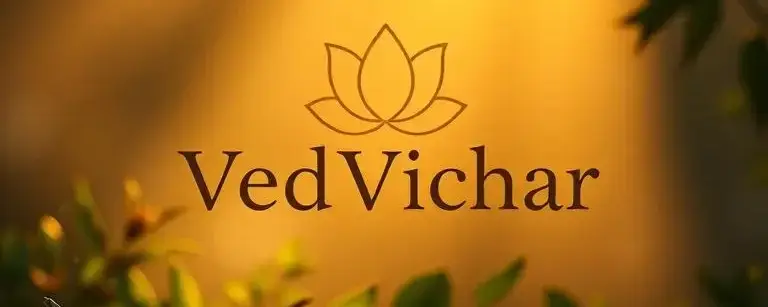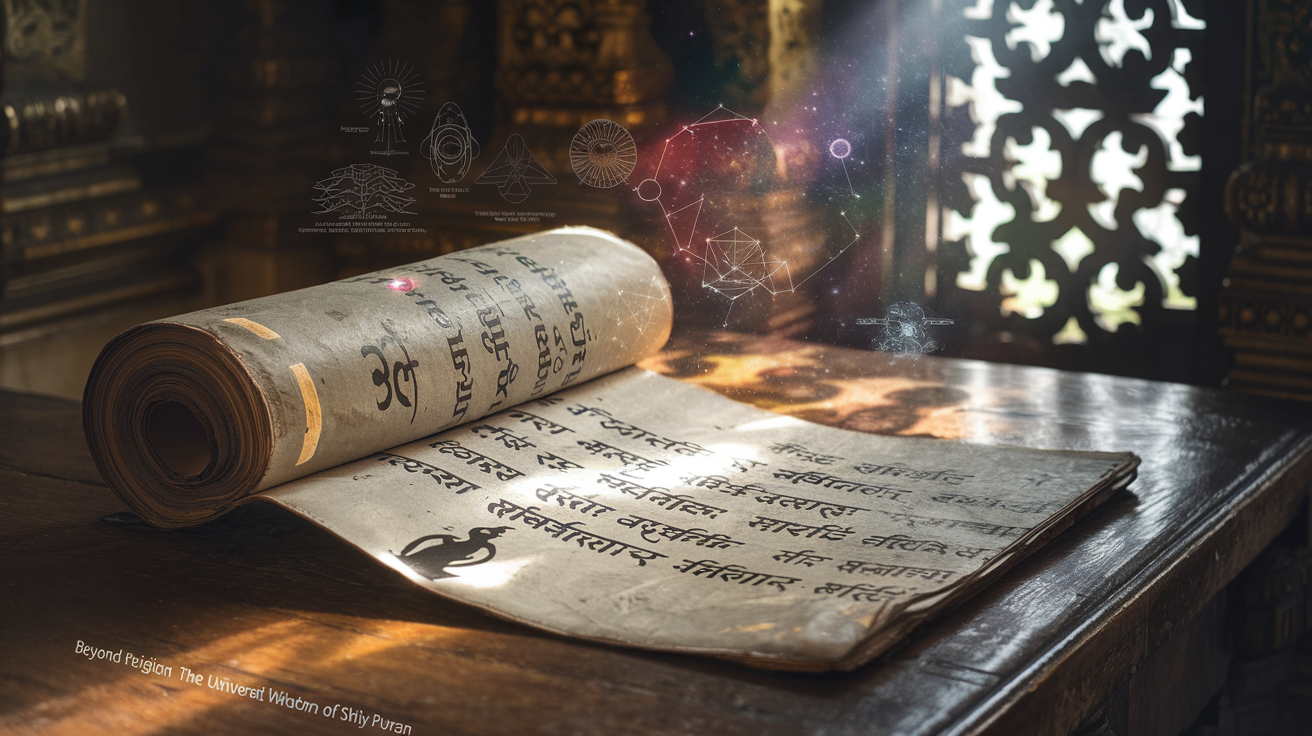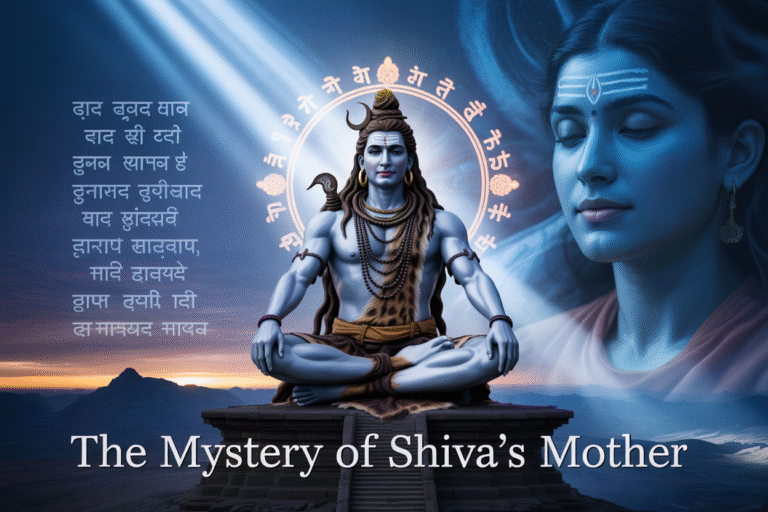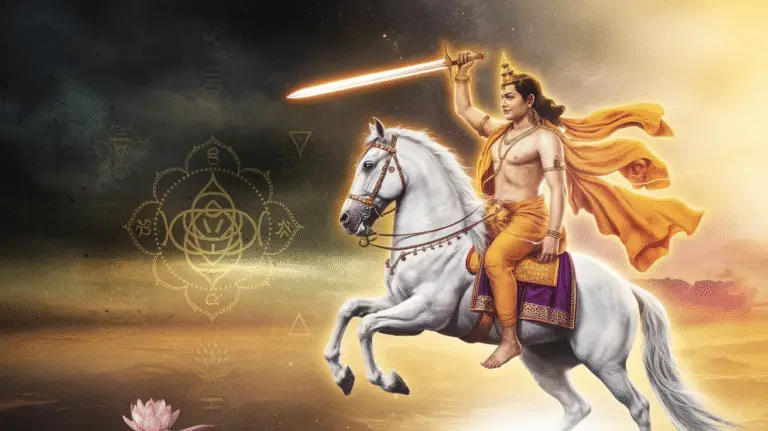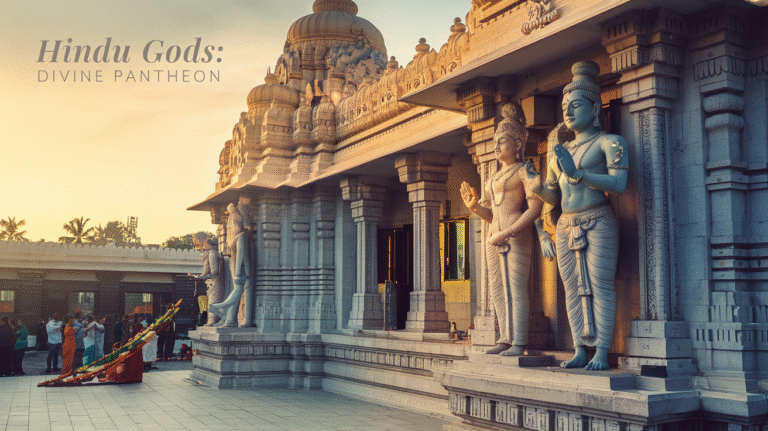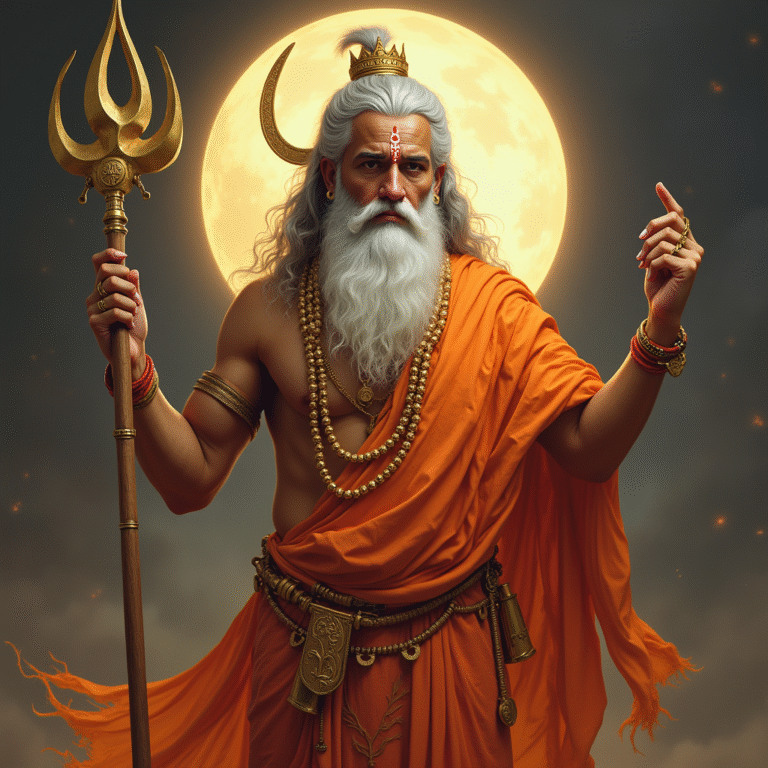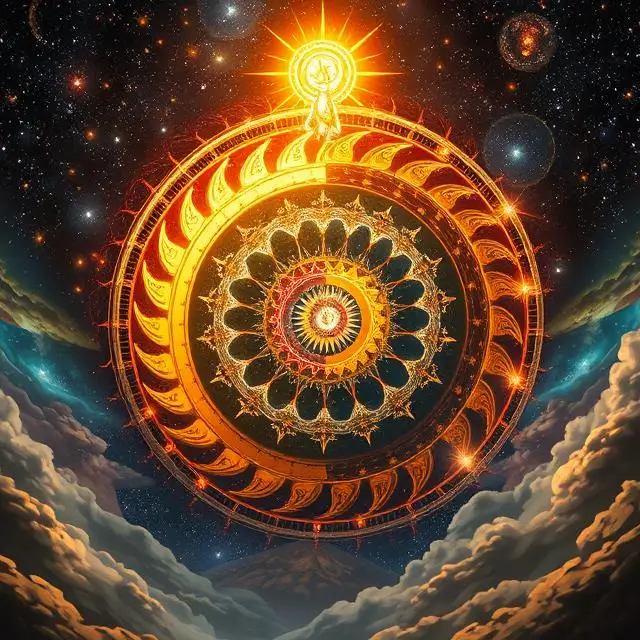What is shiv Puran – You Won’t Believe What Secrets the Shiv Puran Holds!
Ever picked up the Shiv Puran expecting dusty mythology only to find yourself reading what feels like ancient psychology? What is shiv puran? You’re not alone.
Most people dismiss Puranic texts as outdated religious stories, but the Shiv Puran operates on an entirely different level. Beyond the divine narratives of Lord Shiva lies a sophisticated framework for understanding human consciousness, emotional intelligence, and our relationship with the universe.
When you explore Shiv Puran’s symbolism, you’re not just reading about deities – you’re accessing wisdom that predates modern psychology by thousands of years. The text offers practical guidance on managing destructive emotions, understanding cyclical patterns in life, and finding inner balance.
But here’s what most modern readers miss completely: the Puran isn’t asking for blind faith. It’s inviting you to test its principles against your lived experience.
The Historical Significance of Shiv Puran
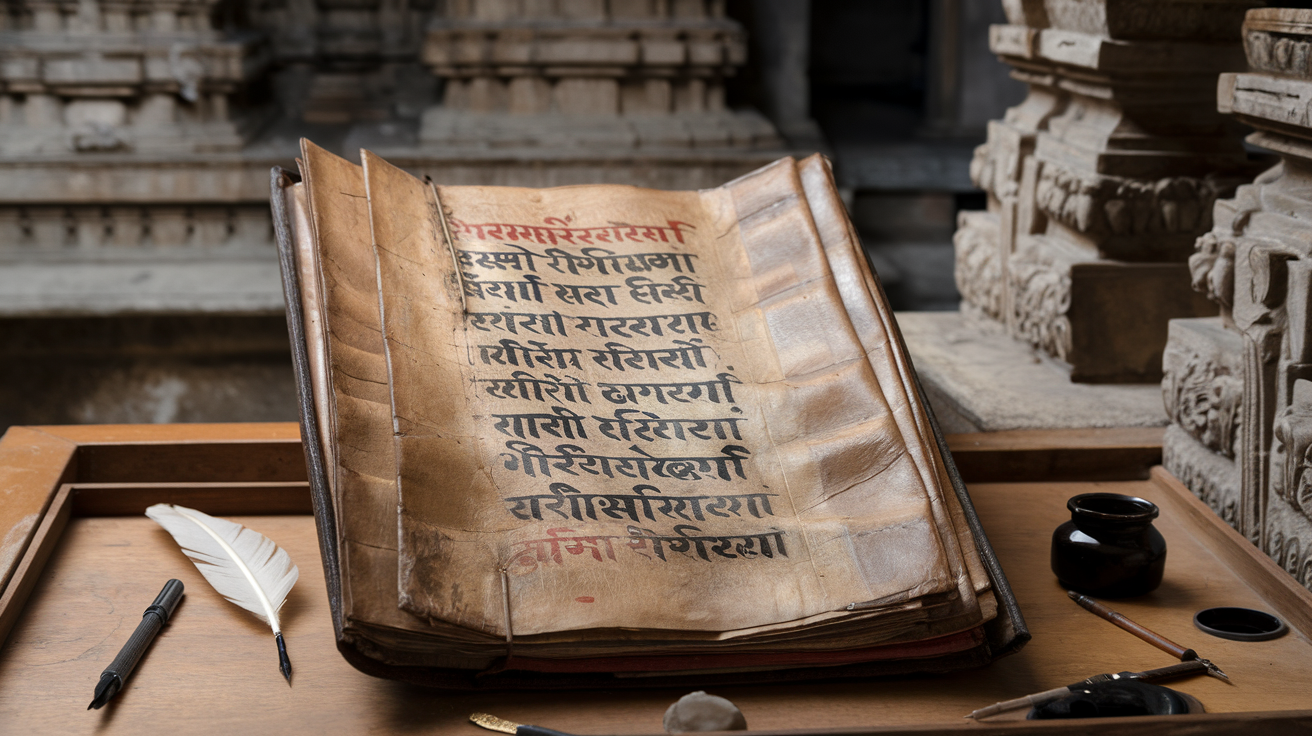
Origins beyond religious boundaries
The Shiv Puran didn’t just appear out of nowhere to serve religious purposes. It emerged during a fascinating period of intellectual evolution in ancient India, somewhere between the 5th and 9th centuries CE. What’s striking? Non-Shaivites contributed to its development too.
This text transcends simple devotional boundaries. Historians have traced influences from diverse philosophical schools including Samkhya and early Tantric traditions. Excavations at sites like Mathura and Ellora reveal inscriptions that predate the formalized text, showing how these ideas were bubbling up across different communities.
Unlike what many assume, the Puran wasn’t written by a single author with a religious agenda. It was a collective cultural response to existential questions that plagued everyone, regardless of their faith affiliations.
Cultural impact across centuries
The Shiv Puran didn’t stay locked in temples – it seeped into everything.
From the magnificent Brihadeshwara Temple in Thanjavur to the lyrics of Kashmiri folk songs, its influence is impossible to miss. Medieval kings across India, even those who weren’t devout Shaivites, commissioned artistic works based on its narratives.
During the Bhakti movement, poets like Tulsidas and Kabir drew from it while critiquing religious orthodoxy – pretty ironic when you think about it.
What’s truly remarkable is how it shaped cultural norms beyond religion:
| Sphere | Impact of Shiv Puran |
|---|---|
| Art | Established iconographic standards still used today |
| Marriage customs | Influenced rituals across religious boundaries |
| Forest conservation | Inspired sacred grove traditions in multiple regions |
| Dance forms | Provided narratives for classical performances |
What is shiv Puran? Historical context that shaped its narratives
The Shiv Puran wasn’t written in a vacuum. It emerged during tumultuous times.
The decline of Buddhism in parts of India, political fragmentation after the Gupta Empire, and agricultural innovations all left their mark on the text. The emphasis on Shiva as both destroyer and regenerator mirrors the social upheavals of its era.
Foreign invasions and trade with distant lands brought new philosophical ideas that the text absorbed and responded to. When you read about Shiva’s cosmic dance, you’re actually seeing an artistic response to the chaotic political landscape of early medieval India.
Some scholars argue that certain sections reflect struggles between different socio-economic groups – with forest-dwelling ascetics challenging the dominance of urban elites. The text became a battleground for competing worldviews dressed in mythological clothing.
Preservation through oral and written traditions
The survival of the Shiv Puran is nothing short of miraculous.
Before palm leaf manuscripts became common, generations of scholars memorized enormous sections word-for-word. Talk about dedication! These oral traditions varied regionally, which explains the multiple recensions we have today.
When Muslim invasions threatened temple libraries in North India, South Indian kingdoms became crucial preservation centers. Copper plate inscriptions from the Chola period mention specific efforts to protect these texts.
Colonial periods brought new challenges. British collectors often misunderstood or deliberately misrepresented the texts. Indian scholars responded by creating new preservation methods, including hidden manuscript libraries in Kerala and Rajasthan.
Today’s digitization efforts finally democratize access to a text that spent centuries being carefully guarded by select lineages. The very text that once required ritual purification to touch can now be read on smartphones.
Philosophical Depth Beyond Religious Dogma
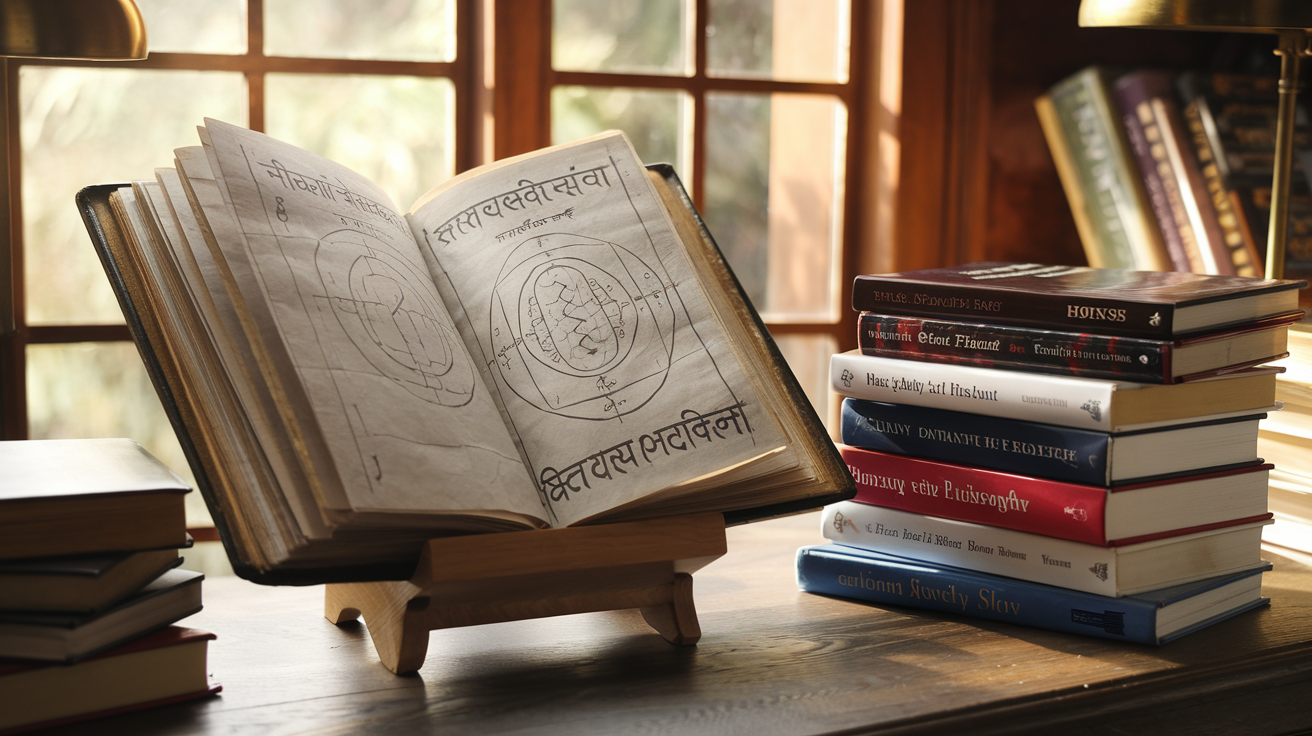
A. Universal metaphysical concepts in Shiv Puran
The Shiv Puran isn’t just telling stories about a deity with a snake around his neck. Dig deeper and you’ll find it’s actually exploring the fundamental nature of reality.
When the text describes Shiva as both formless (nirguna) and with form (saguna), it’s tackling the same paradoxes that kept philosophers like Kant and Heidegger up at night. The concept of Shiva as the underlying consciousness of the universe mirrors what quantum physicists struggle to articulate about the observer effect.
Ever noticed how the Puran describes time as cyclical rather than linear? That’s not just ancient thinking—it’s a sophisticated cosmological model that challenges our conventional understanding of existence.
B. Existential questions addressed through mythology
Who are we? Why are we here? What happens after death?
The Shiv Puran doesn’t dodge these questions. It just wraps them in stories you can actually remember.
Take the tale of Shiva drinking poison during the ocean churning. On the surface, it’s a dramatic myth. Scratch deeper and you’re looking at a profound metaphor for transforming suffering into something that doesn’t destroy you but becomes part of your strength.
The dialogues between Shiva and Parvati aren’t just divine couple’s talk—they’re philosophical inquiries where the masculine principle of consciousness meets the feminine principle of energy, exploring how these forces shape our existence.
C. Ethical frameworks that transcend religious practice
The ethical vision in Shiv Puran isn’t about following rules to please a god. It’s about understanding the nature of consciousness and acting from that understanding.
When the text discusses dharma, it’s not just listing do’s and don’ts—it’s exploring how to live authentically when you recognize the interconnectedness of all things. This isn’t religion; it’s a practical psychology for navigating life.
The Puran’s treatment of desire, attachment, and liberation offers insights that would make modern therapists nod in recognition. Its approach to emotions like anger and grief provides a framework that works whether you’re religious or not.
Psychological Insights in Shiv Puran’s Narratives

Archetypes and their modern psychological parallels
Ever noticed how Shiva represents both creation and destruction? That’s no accident. Carl Jung would have a field day with Shiv Puran. The text presents archetypes that mirror our modern understanding of psychology in stunning ways.
Shiva himself embodies what Jung called the “Self” – the complete personality that emerges when conscious and unconscious unite. Meanwhile, Parvati represents the anima – the feminine aspect within the male psyche. Their relationship illustrates the integration of opposing forces we all struggle with daily.
And let’s talk about Ganesha – the remover of obstacles. In psychological terms, he represents our ability to overcome internal resistance and blockages. When you’re procrastinating on that big project, you’re essentially lacking Ganesha energy.
Understanding human behavior through divine stories
The Shiv Puran doesn’t just tell cool stories – it’s practically a textbook on human behavior.
Take the tale of Shiva consuming poison during the ocean churning. On the surface, it’s about a god saving the world. Dig deeper, and you’ll find it’s about handling toxic situations without being destroyed by them.
Or consider how Shiva opens his third eye when provoked. It’s the perfect metaphor for what happens when we suppress anger until it explodes. The story teaches emotional regulation in a way modern psychology only formalized centuries later.
Symbolic representations of the mind and consciousness
The trident (trishul) of Shiva? That’s not just a weapon. It symbolizes the three states of consciousness – waking, dreaming, and deep sleep. Modern neuroscience identifies similar states.
Shiva’s meditation on Mount Kailash mirrors what psychologists now recommend for mental clarity – finding your quiet space and practicing mindfulness.
The Puran doesn’t explicitly call these “mind states,” but the parallels are uncanny. The damaru (drum) represents the rhythm of consciousness, expanding and contracting just as our awareness does throughout the day.
Therapeutic wisdom embedded in ancient tales
The Puran was therapy before therapy was cool.
When Shiva grieves for Sati, carrying her body across the universe, it’s actually modeling healthy grief processing. First intense attachment, then gradual acceptance as pieces of her fall away (literally, as Vishnu cuts pieces of her body).
The stories offer what therapists now call “narrative therapy” – using stories to help people reframe their own struggles. Feeling overwhelmed? There’s a Shiv Puran story for that.
Tools for self-reflection and personal growth
The Puran doesn’t just entertain – it transforms.
Stories like Shiva appearing as a pillar of light to humble Brahma and Vishnu serve as powerful metaphors for ego dissolution. Modern mindfulness practices aim for the same outcome.
The text offers meditative techniques that psychology now confirms reduce anxiety and depression. Mantras described in the Puran create what psychologists call “flow states” – moments of complete immersion and focus.
Rather than just telling you to “know thyself,” the Puran provides symbolic frameworks for self-understanding that work as effectively as any modern personality test – just with better storytelling.
Scientific Parallels in Shiv Puran
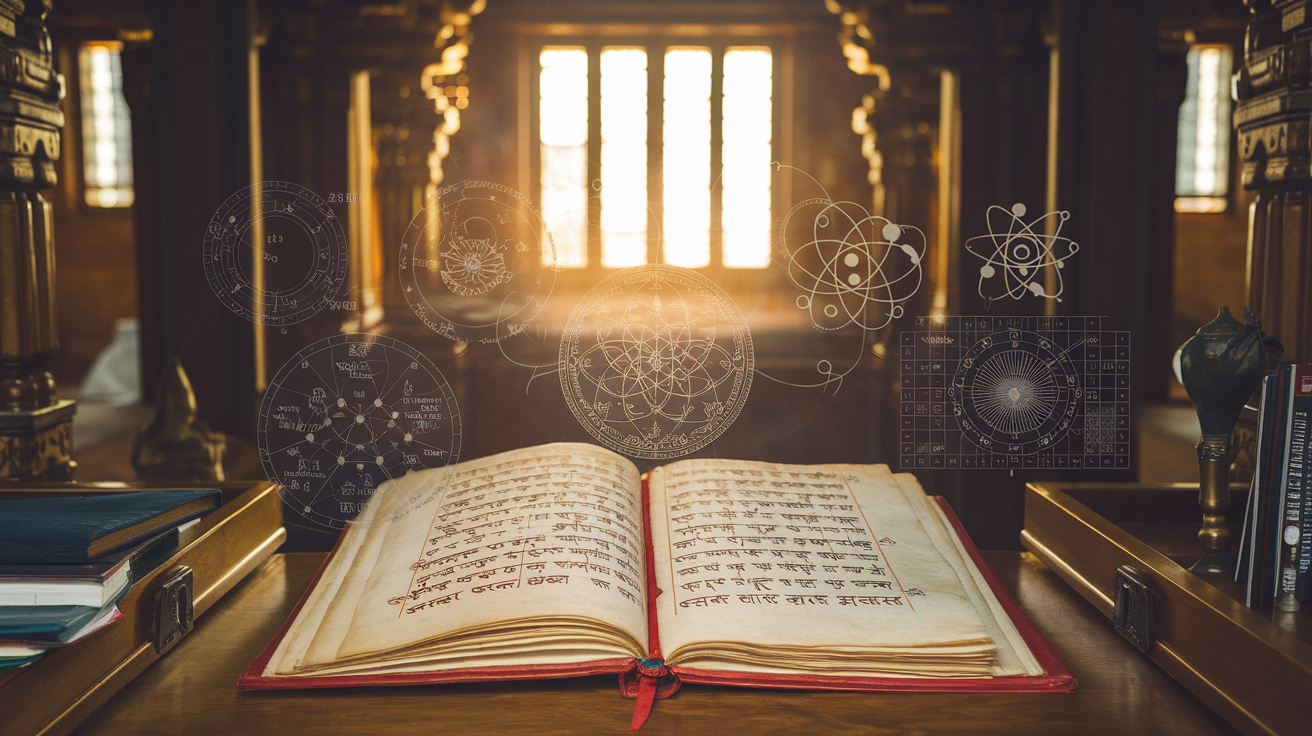
A. Cosmological concepts that align with modern science
Ever noticed how ancient texts sometimes nail modern scientific ideas? Shiv Puran is packed with cosmological concepts that would make today’s astrophysicists raise their eyebrows.
The Puran describes the universe as being created and destroyed in cycles – remarkably similar to the Big Bang and Big Crunch theories. When modern science was still figuring out that the universe expands and contracts, Shiv Puran had already painted this picture thousands of years ago.
It gets better. The text mentions multiple universes existing simultaneously – a concept that string theory and quantum physics are only now exploring as the multiverse theory.
The Puran also describes the universe emerging from a singular point of infinite energy – sound familiar? That’s basically what modern science calls a singularity.
B. Understanding of time, space and energy
The ancient seers weren’t playing around when they conceptualized time in Shiv Puran. They didn’t just think in years or centuries – they thought in yugas and kalpas spanning billions of years.
A single day of Brahma (kalpa) equals 4.32 billion years. That’s roughly the age of Earth according to modern science. Coincidence? I think not.
Space isn’t just empty nothingness in Shiv Puran. It’s described as a vibrating field of energy – surprisingly close to quantum field theory’s understanding of spacetime.
The text also introduces the concept of Shakti – cosmic energy that creates, preserves, and transforms the universe. This mirrors our modern understanding of energy as the fundamental force driving cosmic processes.
C. Environmental wisdom and ecological balance
Shiv Puran doesn’t just preach worship – it promotes practical ecological balance that we desperately need today.
Rivers are sacred not just symbolically but practically – the text specifically prohibits polluting water bodies. It understood watershed management before it was cool.
The reverence for trees, especially the Bilva tree associated with Lord Shiva, isn’t random spiritual mumbo-jumbo. These specific plants often have medicinal properties and provide ecological services.
Mountains, described as the abode of Shiva, are portrayed as crucial for ecological stability – something modern environmental science confirms through studies of how mountain ranges affect weather patterns and biodiversity.
The text essentially created an environmental code of conduct wrapped in spiritual practices, making conservation culturally relevant and personally meaningful thousands of years before the first Earth Day.
Literary and Artistic Value

A. Poetic excellence and narrative techniques
The Shiv Puran isn’t just dense theology—it’s a masterpiece of literary artistry. The text flows with rhythmic Sanskrit verses that create musical patterns when recited aloud. Unlike dry religious manuals, it employs vivid imagery that brings cosmic battles and divine romances to life.
What makes it truly special? The narrative techniques. The composers didn’t just tell stories—they wove complex narratives within narratives, creating a literary Russian doll effect. Stories branch into sub-stories, then reconnect to main plots with satisfying precision.
The dialogue between characters feels surprisingly modern—natural conversations that reveal personality and motivation rather than just delivering philosophical points. When Shiva speaks to Parvati, you hear not just a god, but a husband with distinct character traits.
B. Influence on Indian art, architecture and dance
Walk into any classical Indian dance performance and you’re watching the Shiv Puran in motion. The iconic Nataraja pose—Shiva as cosmic dancer—has inspired countless sculptures, paintings and dance forms.
The temple architecture across India owes tremendous debt to Shaivite imagery. From the massive Brihadeeswara Temple to small roadside shrines, architectural elements directly reference stories and symbols from the text.
Indian painters have drawn from the Puran for centuries. The blue-throated Neelakantha, the third-eye symbolism, the damaru drum—these visual motifs appear endlessly in traditional and contemporary art forms.
C. Storytelling frameworks that continue to inspire creators
Modern Indian cinema? Yeah, it’s basically recycling the Shiv Puran’s narrative techniques. The flashback structure used in countless Bollywood films mirrors how the Puran tells stories within stories.
Comic book creators have noticed the Puran’s power too. The character arcs—from flawed beginnings to transcendence—provide perfect templates for contemporary heroes. Marvel’s approach to mythology owes more to these ancient frameworks than they might admit.
The text mastered the art of the plot twist centuries before M. Night Shyamalan. Stories set up expectations only to subvert them completely, creating memorable moments that stick with readers. This technique of narrative reversal remains incredibly effective in today’s storytelling landscape.
Practical Life Lessons for Contemporary Living

A. Relationship wisdom for modern families
The family dynamics in Shiv Puran aren’t just ancient stories—they’re surprisingly relevant today. Take the relationship between Shiva and Parvati. Their partnership shows us what healthy communication looks like, even during disagreements.
Remember when Parvati performed intense tapasya to win Shiva’s attention? It’s a powerful reminder that relationships require effort and dedication. Not suggesting you meditate in the Himalayas for years, but the principle stands—commitment matters.
What’s fascinating is how the Puran portrays parenting. Shiva and Parvati’s relationship with Ganesha and Kartikeya demonstrates setting boundaries while giving children space to develop their unique strengths. When Shiva beheaded Ganesha (stay with me here), it wasn’t just divine drama but a lesson about recognizing when our assumptions about our children are wrong, and making amends.
B. Conflict resolution strategies from divine narratives
The Puran is packed with conflicts that get resolved in ways we can apply today:
- The cooling-off period: When Shiva was angered, he often retreated to meditate before responding. Sound familiar? It’s the “count to ten” advice your therapist gives, just divine-style.
- Active listening: When devotees approached Shiva with problems, he gave them full attention before responding. No divine multitasking.
- Perspective-taking: The story of Shiva drinking poison during Samudra Manthan shows the ultimate sacrifice for collective good. Sometimes resolving conflicts means someone needs to swallow their pride.
C. Leadership principles drawn from Lord Shiva’s stories
Shiva’s leadership style is wildly different from today’s corporate gurus, yet strangely applicable:
- Accessible leadership: Despite being the supreme deity, Shiva was approachable to all devotees regardless of status—a reminder that great leaders maintain open doors.
- Balance of strength and compassion: Shiva could destroy worlds yet showed immense compassion. Real leadership isn’t just about power but knowing when to show restraint.
- Authentic presence: Shiva never pretended to be something he wasn’t. He lived simply, spoke honestly, and led by example. No fancy clothes or false promises—just authentic guidance.
D. Balance between material and spiritual pursuits
The Puran doesn’t ask you to choose between worldly success and spiritual growth—it suggests integration:
Shiva himself represents this balance perfectly. He’s both the ascetic yogi and the passionate husband. He meditates in cremation grounds yet enjoys family life with Parvati.
This teaches us something crucial: spirituality isn’t about escaping life but embracing it fully while maintaining inner awareness.
The text offers practical approaches:
- Set aside time for both material goals and spiritual practices
- Find sacred meaning in everyday activities
- Remember that wealth and comfort are fine when not becoming attachments
- Practice mindfulness during daily tasks, turning ordinary moments into opportunities for growth

The Shiv Puran stands as a remarkable testament to the depth and breadth of ancient wisdom, transcending its categorization as merely a religious text. Its historical significance, philosophical richness, and psychological insights offer readers a comprehensive worldview that remains relevant across centuries. The surprising scientific parallels found within its pages, coupled with its outstanding literary and artistic value, demonstrate how this ancient text bridges spirituality with rational understanding.
As we navigate our complex modern lives, the practical wisdom contained in the Shiv Puran provides timeless guidance for personal growth and ethical living. Whether you approach it as a spiritual seeker, a student of philosophy, or simply a curious mind, this extraordinary text rewards exploration with layers of meaning that speak to the universal human experience. Consider exploring the Shiv Puran with an open mind—you may discover that its ancient narratives offer precisely the insights needed for our contemporary challenges.
